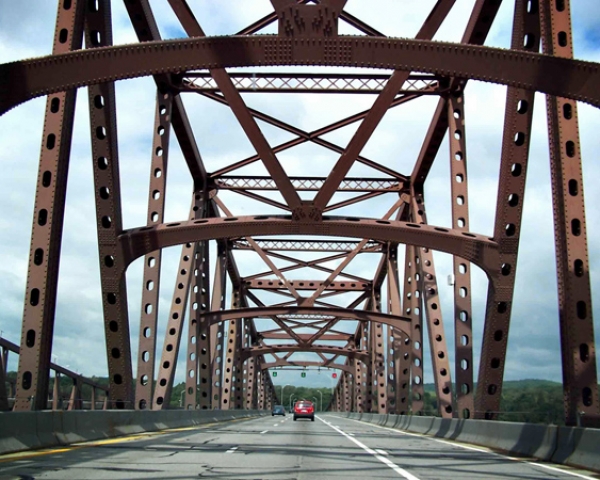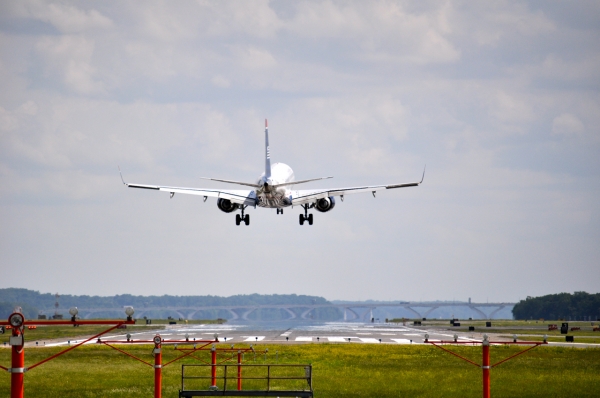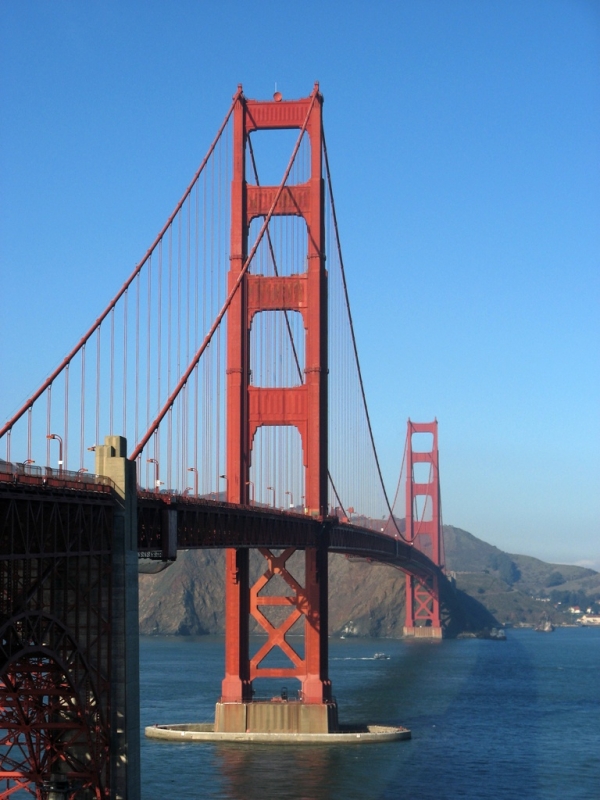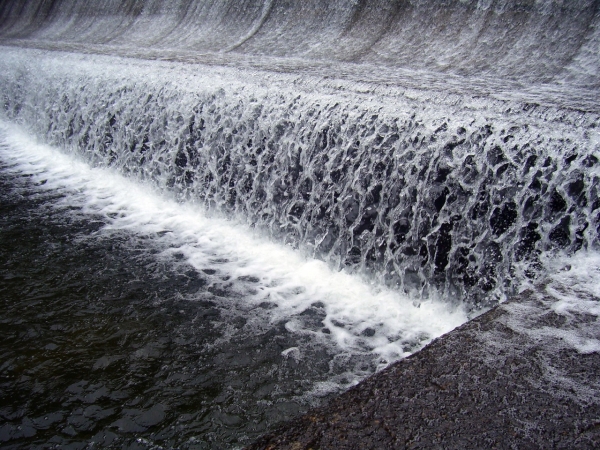One of my college friends, Lisa Starling, recently had an audition in Los Angeles for a new role in a daytime soap opera. She had been working in local theater on the East Coast for two years, and was really glad to have this fantastic opportunity in California.

U.S. Infrastructure Series
Three Square Miles Of Concrete
A Bridge To Everywhere
It's About Dam Time!
We Might Have A Drinking Problem
Lisa got up early in the morning, took a shower, made some coffee, and microwaved a couple slices of pizza left over from the previous night. A few of our friends had been over to help her practice her lines. She called a cab, and made a cell phone call to her mom to remind her that she’d need to watch the cat for a few days. The cab crossed over two bridges and through a tunnel on the way to the airport. Lisa got on a light rail system in the airport concourse, and got onto her plane on time. It was a smooth flight into LAX.
The audition went great, and Lisa got the part! She went on to get a lead role in her TV show, and won a day-time Emmy Award. In her acceptance speech, she thanked the civil engineers that facilitated her arrival to the original audition in Los Angeles on time.
OK, that last part didn’t happen. Actually, none of it happened. Lisa Starling is fictional; but there are thousands of aspiring “Lisas” out there that are quite real, among millions of other working Americans like yourself.
Depending on your perspective, Lisa’s trip to Los Angeles has nothing or everything to do with the condition of infrastructure in the United States. This article is not a file copy error onto Buildipedia.com, but you probably thought so at first. Lisa’s day, or one similar to it, is played out millions and millions of times each day in the United States, by every one of us.
In the brief space of time between Lisa waking up and taking off for Los Angeles, she used many categories of U.S. infrastructure: electricity for apartment lighting and the microwave oven, water and waste-water for a shower, communications towers for the cell phone calls to the cab and to her mom. During her cab ride, she drove on highways and bridges, and through tunnels. Then there’s the airport itself, including its light rail, runways, and air traffic control system.
It is not hard to imagine that if any phase of Lisa’s fictional journey to the airport were interrupted, then her day’s routine, if not her life, could have been quite different. What if the alarm didn’t go off because of a power outage? What if her water supply was shut off because of a water main break? What if the phone switchgear servicing the cab company failed, or the tunnel was unexpectedly closed to check for leaks? What if the light rail or runway at the airport was shut down for emergency repairs? Any of these issues could have ruined Lisa’s trip to Los Angeles and altered her potential future.
Most folks in the civil engineering field will probably agree that our industry gets the most focus when our completed projects don’t work well, and about none when they do. It’s just the nature of the beast, an accepted part of our chosen profession, but it’s a paradigm with real implications when funding priorities are discussed in a budget constrained environment. The challenge with this dynamic is that the funding required to maintain our national infrastructure is often overlooked, because of the subtle nature of our successes and the obvious nature of our failures. We are now seeing this dynamic play out all around us on a national scale.
The American Society of Civil Engineers (ASCE) routinely rates the condition of major U.S. infrastructure, assigning a letter grade on the A through E scale that we are familiar with from high school. The categories that the ASCE evaluates are: Aviation, Bridges, Dams, Drinking Water, Energy, Hazardous Waste, Inland Waterways, Levees, Public Parks and Recreation, Rail, Roads, Schools, Solid Waste, Transit, and Waste Water. The ASCE has issued its most recent evaluation in 2009, indicating a combined national score of a “D” and a required investment of $2.2 trillion to restore the entire system. The attached link will provide individual system grades and greater details: http://www.infrastructurereportcard.org/
Previous ASCE grade reports were issued in 1998, 2001, 2003, and 2005. ASCE picked up on a theme that started in 1988, when Congress mandated a report on U.S. infrastructure titled: Fragile Foundations: A Report on America’s Public Works. The original 1988 report was completed by the National Council on Public Works Improvement, and an overall letter grade of a “C” was assigned to our infrastructure. Since the 1998 report card, ASCE has never assigned a combined grade score above a “D+”.
This is the first article of a series related to U.S. infrastructure. Join us at Buildipedia.com as we take a more detailed look at events relating to U.S. infrastructure recapitalization and repair. Each new article will target a different element of U.S. infrastructure evaluated by the ASCE, referring to our own KnowledgeBase to describe the engineering systems involved.

Andrew Kimos
Andrew Kimos completed the civil engineering programs at the U.S. Coast Guard Academy (B.S. 1987) and the University of Illinois (M.S. 1992) and is a registered Professional Engineer in the state of Wisconsin. He served as a design engineer, construction project manager, facilities engineer, and executive leader in the Coast Guard for over 20 years. He worked as a regional airline pilot in the western U.S. before joining the Buildipedia.com team as Operations Channel Producer.
Website: buildipedia.com/channels/operations




